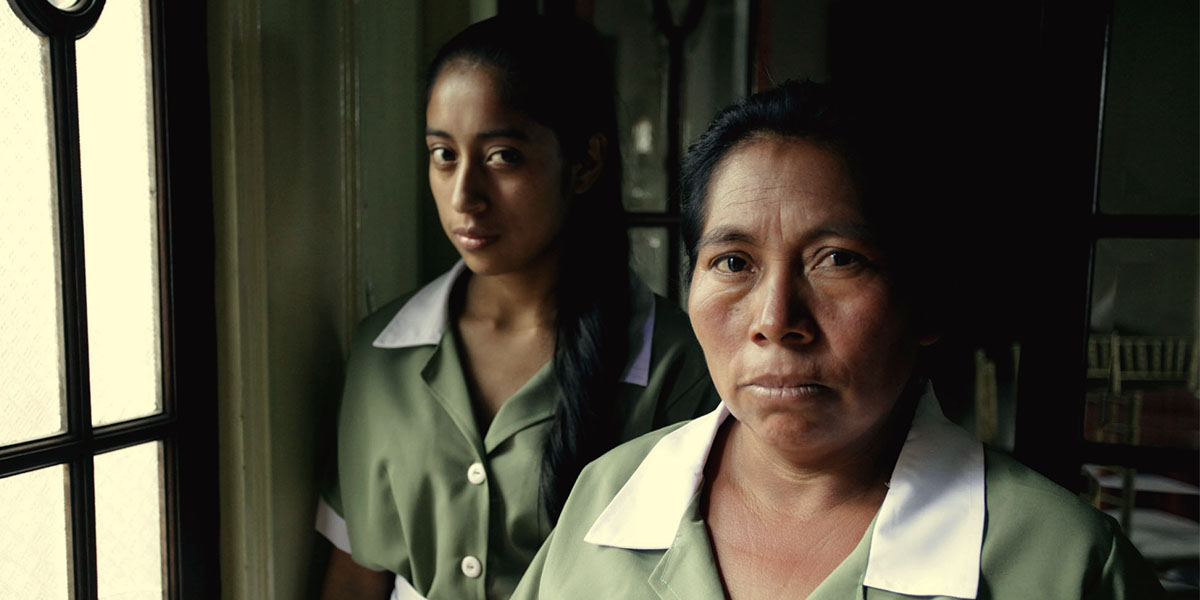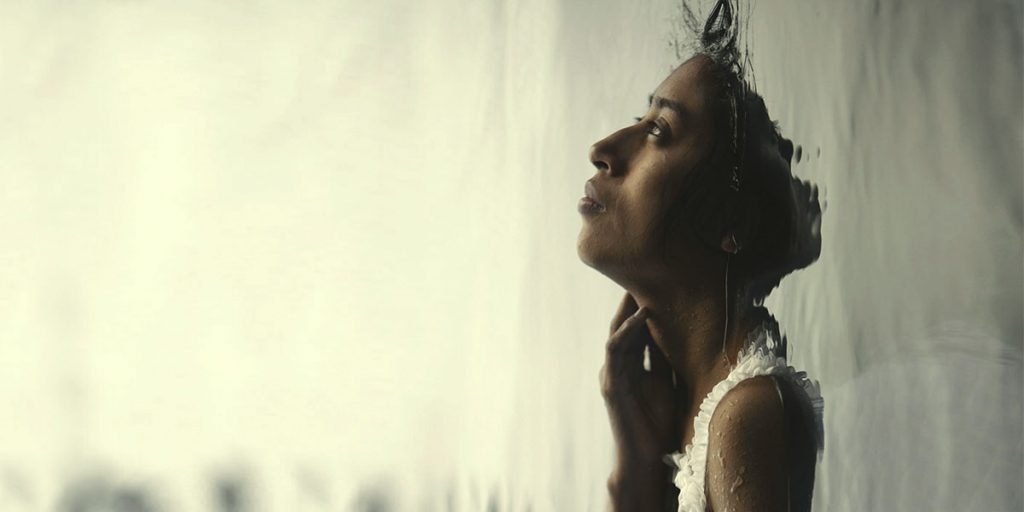We start with the face of an older woman (Margarita Kénefic) looking straight at the audience, never blinking an eye, as loud chanting vibrates through the room. The camera pulls back to reveal a prayer circle while the ominous score gives off the sense that something is wrong. That’s how Jayro Bustamante’s La Llorona teases the horror elements that will accompany the story, as he then introduces us to a group of military men calmly drinking whiskey and discussing what they’ll do if the boss goes to jail.
In just a few minutes, Bustamante sets up the plot of his third feature, and the aesthetic tools he’ll employ to tell this story. This is a movie rooted in the very real atrocities of Guatemala’s Civil War and the genocide that resulted from said war, but one that will be presented as a chilling tale inspired by Latin America’s best-known ghost story.
Coinciding with the La Llorona’s premiere at the Toronto International Film Festival, we talked to writer-director Jayro Bustamante about his haunting movie. “In Guatemala, there’s a movement going on right now where people want to pretend that life is wonderful and there’s nothing wrong going on,” Bustamante told Remezcla. “There are people who even say that there was no genocide [during the Civil War] and I wanted to confront that idea, but I knew doing it as a drama would not be appealing to audiences who crave only entertainment. That’s why I had the idea of entering the film as a horror movie and then the metaphor of La Llorona as a Mother Earth crying for her children came in; it just fit perfectly.”
Though the presence of La Llorona looms over the story of Enrique Monteverde (Julio Diaz), an aging military general in early stages of Alzheimer’s who thinks he’s tormented by spirits, the bulk of the story deals with the social uproar when the general’s conviction is overturned on a technicality after being found guilty of genocide. The souls of those who were lost in the war — especially those of Maya children — haunt the movie and its protagonist, even as the characters refuse to believe such a thing could happen on their doorstep.
The opening of the movie throws the audience right in the middle of a terrifying story, with Pascual Reyes’ enthralling music score being influenced by the sounds of psychological thrillers and horror movies like The Exorcist while combining those sounds with traditional Maya instruments. Likewise, Eduardo Cáceres adds a sound design that keeps the audience on its toes at all times, with high-pitched chirridos haunting the house and the aging general. Even the cinematography adds a blue tint to the movie that evokes a cold, eerie feeling that something isn’t quite right — both with the supernatural aspects of the movie but also its subject matter. Cinematographer Nicolás Wong uses natural light as to keep the characters (and the audience) in the dark, powerless to stop the spiritual reckoning that’s coming for them.

Bustamante says that he started working on the movie as a straight-up scary movie at first. “As we started reading testimonies from those who lived through the war,” Bustamante said. “We decided to start peeling back some of the elements and try to be more subtle as to appeal to a broader audience that may not be interested in straight horror, but be more inclined to watch a suspense movie or a psychological thriller.”
A series of jump-scares introduces the titular La Llorona. “We wanted to establish La Llorona as a looming presence early on,” Bustamante told us. “And by then the audience knows what to expect, so for the rest of the movie the audience can find the horror wherever they want to find it.”
In an early scene, General Monteverde’s family hires a new maid Alma (María Mercedes Coroy) after most of the help quit before the trial. Her first night sleeping at the house, Monteverde wakes up to the sound of weeping, sees a shadowy figure sneak around his estate with high-pitched sounds of string instruments signaling what the general believes to be La Llorona’s arrival — until he takes out his pistol and shoots at what ends up being his wife Carmen (Margarita Kenéfic).
As for the La Llorona, Bustamante decided not to explain her legend — as most Latin Americans are already familiar with it — and instead lets her imagery speak for itself. The crying, the white dress in the dark, and Monteverde’s terrified expression when he thinks he’s seen the ghost give enough context for the unfamiliar.
The result is a fascinating movie that works just fine as a drama about the terrors of the war and a family that slowly comes to terms with the dark side of their patriarch. But by adding tropes from the horror genre, including references to several movies from The Exorcist, to George A. Romero’s zombie films and even The Ring, La Llorona becomes something else: an enthralling movie that offers scares both from beyond the grave, and from historical atrocities.
Studios take note: the best way to make a Latino horror film is to trust the people who actually know and live in that culture — unlike that other film.
La Llorona screened at the 2019 Toronto International Film Festival.







